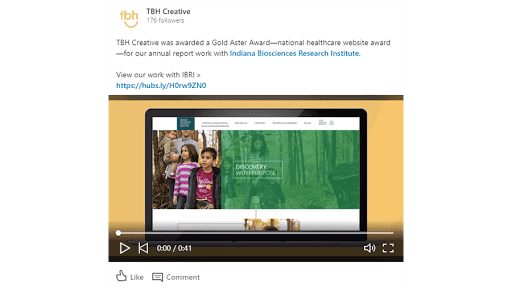Getting a new follower on social media is a win. To keep your audience engaged, sharing the right content at the right time matters.
Without a social media strategy for posting, it takes a lot of luck to get your timing just right. Users on each platform have different tolerances and expectations. Keep reading for tips on how to find the perfect balance between posting too much and too little on social media.
Is your social media posting frequency optimized?
Timing is just one vital part of any social media marketing strategy. If you aren’t seeing the results from your outreach on Facebook, LinkedIn, Instagram, or Twitter, take a step back and re-evaluate your strategy to pinpoint where there are opportunities to improve.
Here are a few questions to consider when assessing your company’s social media strategy:
- Do your social posts provide value to followers?
- Is your content high quality? (e.g., how often do your posts have typos? broken links? off-brand messages?)
- Are you using too many hashtags?
- Are your images and graphics blurry? Are they interesting and appealing?
- Are your posts customized based on what works best for that channel?
Pro-tip: All social media users are different.
The types of posts that work for your company’s target audience may not appeal to those of another business. As you develop a social media marketing strategy, monitor engagement analytics to discover what’s working and what isn’t. Your social media results will reveal which posts made at which times correlate with spikes in unfollows or even spam reports.
How to create a social media posting frequency strategy
Find the ideal frequency for posting to your social media channels by following these platform-specific recommendations:
Aim for posting high quality content a few times each week, especially if you have less than 10,000 followers. At the most, do not post more than once a day and view analytics to see which days of the week (and at what times) make the most sense for when your followers are online using Facebook.
Facebook is an important platform that can make or break your social presence, so share your best content, and share it wisely. According to a recent Hubspot study, when businesses shared multiple posts throughout the day, they received fewer clicks than on days when they posted less frequently.
Contrary to other social media platforms, more is better on Twitter more.
While it is still important to think about your business and social media goals, the more you post on Twitter, the better. Due to the mostly chronological platform, Hubspot experts suggest increasing posting frequency to gain more visibility and clicks.
With varying frequencies across all industries and users, Twitter presents a unique opportunity to not only post but to start conversing with your audience. Companies can easily start conversations, amplify their audiences’ voice, or even quickly add to the conversation by pressing retweet.
As opposed to other platforms, Twitter doesn’t take a social media calendar planned months in advance to stay relevant and reach audiences—it’s far more important to monitor, listen, and work to build relationships with your audience (even if it’s as simple as liking their tweet).
The best posting frequency for Instagram is the one where your business can consistently post high-quality content.
How often you and your company decide to post on Instagram primarily depends on what your followers want and how much time you have to dedicate to your social media strategy. According to Agora Pulse, a strategy is not just plugging in your content, and expecting what works for someone else will work for you, but instead “strategy depends on what your business can sustain.”
If you aren’t sure what the best strategy is for your company, be proactive and experiment with your frequency, noting the variance in engagement versus the number of published posts.
Stick to posting a max of once a day, on weekdays rather than the weekend.
According to HubSpot, posting more than once a day can significantly drop your engagement rate. You see, LinkedIn’s social algorithm plans for users to not be overwhelmed by all the content the businesses they follow are posting.
Instead of chronologically showing you every post from the accounts you follow, LinkedIn hides secondary posts from companies to appear lower in the home dashboard. Posting multiple times a day can be limiting to companies trying to grow their engagement.
 Pro-tip: Feature customers on your LinkedIn account
Pro-tip: Feature customers on your LinkedIn account
Take a look at TBH Creative’s recent post on LinkedIn talking about its online annual report project for the Indiana Biosciences Research Institute. The post’s video and copy work together as a quick case study that showcases the results of this collaboration, including its gold Aster Award. We also give proper credit to our partners at IBRI by tagging their accounts in the post.
Using social media for business
One of the greatest takeaways from the information above is that all social media platforms are different, so your content should be different too. With different posting strategies and algorithms, each social media platform benefits from a custom plan and frequency.
Have a great promotion, campaign, download, or general content you want to share with your audience? Keep sharing content that aligns with your social media marketing strategy, including staying consistent when it comes to your graphics, language, brand, and overall content style.
Ultimately, there is no magic formula for how often you should post. Think creatively when it comes to your next social media posts and take the time to assess your content in order to find the sweet spot for your business. When questioning whether to post content or not, ask yourself the following questions:
- How many times are you going to post today?
- Is your post’s timing best for your users? (Plus, are you posting at a time when you can monitor and respond in a timely manner if users engage with your content)?
- Does your post content vary?
- Are you proud of the posts that are going to be published?
- Are your posts aligned with your brand identity and supporting your business goals?
- Is your content customized to address the differences of each social media platform?
At the end of the day, your social media posting frequency depends on the quality of your content, your business goals, and the amount of time you are willing to commit to your social media efforts.
But, creating great posts alone isn’t enough for sustaining good results. Take the time to identify your users’ needs so you can include as part of your strategy timing recommendations to ensure this outreach helps you get closer to reaching your overall marketing goals.

